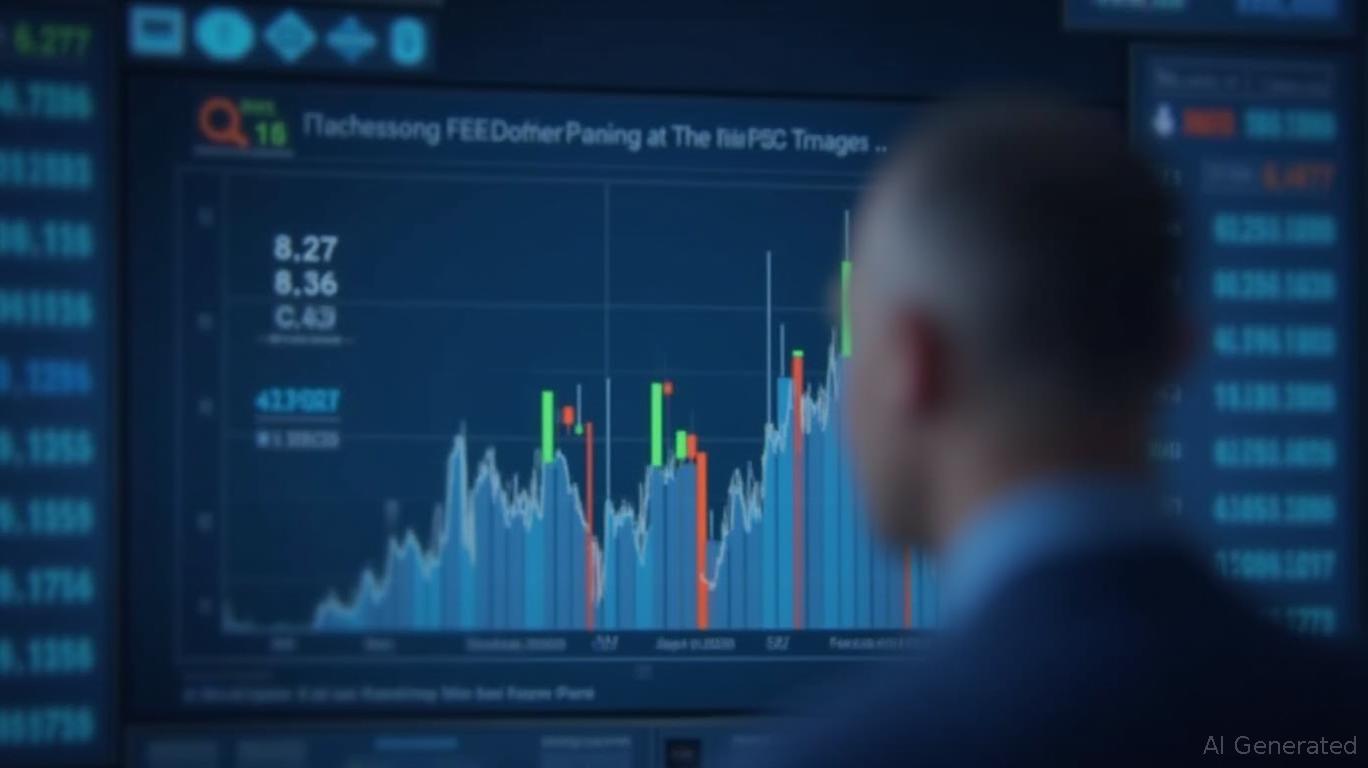The Tech Divide: Navigating Structural Imbalances for Balanced Growth
The tech sector's meteoric rise has left a widening chasm between its soaring valuations and the rest of the market. As of June 2025, technology stocks account for 31.6% of the S&P 500—a historic concentration that masks profound risks. While AI-driven innovation has propelled megacaps like NVIDIA and Microsoft to stratospheric heights, non-tech sectors languish in the shadow of underperformance and geopolitical uncertainty. This structural imbalance demands a reevaluation of diversification strategies to safeguard portfolios against overexposure to tech's volatility.
The Tech Boom: Dominance and Vulnerabilities
The tech sector's dominance is undeniable. From 2023 to 2024, it delivered 57.8% and 50.3% annual returns, respectively, fueled by AI infrastructure investments and semiconductor demand. The "Magnificent Seven" tech giants—Apple, Microsoft, NVIDIA, Amazon, Alphabet, Meta, and Tesla—now command 33.5% of the S&P 500's market cap.

Yet, this concentration comes with risks. Trade tensions with China threaten supply chains, while valuation multiples for tech stocks (29x forward earnings) far exceed the broader market's 19x. The sector's beta of 1.16 reflects heightened volatility, as seen in NVIDIA's 207% stock surge since 2023, driven largely by speculative AI hype rather than proven earnings.
The Non-Tech Lag: Undervalued, Overlooked, and Underappreciated
While tech soars, non-tech sectors face headwinds. Utilities (3.0% of the S&P 500) and Energy (3.0%) struggle with cyclical demand and policy risks. Healthcare (9.6%) trades at historic lows despite projected 8.1%-9.7% earnings growth in 2025. Even industrials, beneficiaries of AI-driven manufacturing, face tariff-related headwinds.
The data paints a stark picture:
- Communication Services (20.9% YTD) and Tech (-0.4% YTD) dominate returns, but their six-month underperformance hints at sector rotation risks.
- Utilities (18.2% annual return) and Financials (26.1% annual return) offer stability but remain undervalued due to interest rate and tariff uncertainties.
The Risks of Overconcentration
- Valuation Bubbles: Tech's 29x multiple exceeds its 10-year average of 22x. A "catch down" scenario could emerge if AI revenue fails to materialize.
- Geopolitical Risks: U.S.-China trade wars disrupt hardware supply chains, as seen in semiconductor shortages.
- Sector Rotation Cycles: Historically, top performers underdeliver the following year. Tech and Communication Services could lag in 2025, per Schwab's "Marketperform" ratings.
The 2022 tech sell-off, where megacaps dragged the S&P 500 down 18%, serves as a cautionary tale. A repeat could be catastrophic for undiversified portfolios.
Strategic Diversification: Bridging the Divide
To mitigate risks, investors must balance growth with stability:
1. Allocate to AI Essentials
Sectors like Utilities and Energy are foundational to AI infrastructure. Data centers' electricity demand is projected to double by 2026, creating revenue tailwinds. Consider utility stocks like NextEra Energy or Duke Energy, trading at 16x multiples versus Tech's 29x.
2. Target Non-Tech Value Plays
- Healthcare: Focus on equipment suppliers and biotech firms with tangible earnings, such as Medtronic or Illumina.
- Financials: Benefit from rising rates but avoid banks exposed to tariffs. Regional banks like Bank of America or JPMorgan offer stability.
- Materials: Overlooked but critical for tech hardware (e.g., copper for semiconductors). Freeport-McMoRan trades at 7.5x earnings.
3. Embrace Sector Rotation
Use ETFs like the Utilities Select Sector SPDR (XLU) or Vanguard Financials ETF (VFH) to gain exposure to undervalued sectors. Pair them with a 40%-50% stake in tech to maintain growth exposure.
4. Monitor Multiples and Fundamentals
Avoid overpaying for AI hype. Early-stage startups (median $12M pre-money valuations) may face multiple compression as investors demand capital efficiency. Stick to companies with strong cash flows, like NVIDIA ($460B in collective cash reserves), or infrastructure firms like Equinix.
Conclusion: Balance is the New Growth
The tech divide is not just a performance gap—it's a risk gap. While AI innovation drives progress, overconcentration invites disaster. By diversifying into undervalued non-tech sectors and monitoring geopolitical risks, investors can harness growth while mitigating volatility. As the market shifts from hype to reality, portfolios built on balance will outlast those anchored in a single sector's ascent.
Investment Takeaway: Allocate 40%-60% to tech for growth, 20%-30% to utilities/energy for stability, and 10%-20% to healthcare/financials for value. Stay vigilant on trade policies and valuation multiples to navigate the divide.

Comments
No comments yet